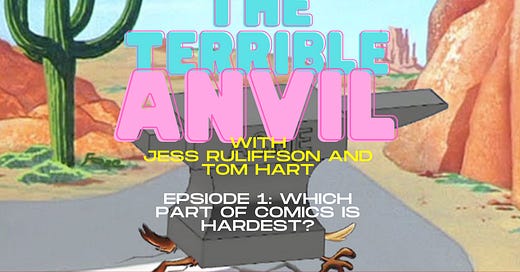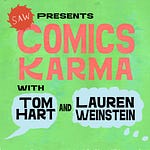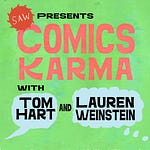How do you make comics without all the frustration? Without feeling lousy and inadequate all the time? With the Terrible Anvil of daily deadlines! And a community, and mindset shift about what it means to make comics and art. Jess Ruliffson and Tom Hart are working through the whole process, one piece at a time, turning frustration into fun and glee.
Episode 1 - What Part of Comics is the Hardest?
Recorded at SAW on Zoom
What is The Terrible Anvil?
Tom and I were bantering one day on a call and one of us said HEY WE SHOULD MAKE A PODCAST LIKE THIS!
So, it's a podcast.
Each week, we grapple with the BIG QUESTIONS about making comics. The "terrible anvil" itself is from nineteenth century badboy Emile Zola, who opined, "One forges one style on the terrible anvil of daily deadlines."
(Emile looks a little unimpressed with us, but I am deeply impressed with his immaculate sense of style here in this 1902 photograph.)
What is this podcast like?
We record with a live (Zoom) audience, so there's some participation in that sense, but mostly, we build the structure of each week's episodes by soliciting questions from members of the SAW community in the Comics Flow and Publish group.
This week's question was: What Part of Comics is Hardest?
We talked about drawing, suffering, self-doubt, the inner critic, LOTS of good stuff! See below for a little recap of the first podcast!
What is "bootleggers"?
Jess Ruliffson is one of SAW's instructors and she's making a book! The Bootlegger's Guide to Comics.
What is a bootlegger? A bootlegger is someone who by hook or crook will make their art, abandoning the gatekeepers, rules, inner and external critics, literary best practices, and any other sort of puffery or obstacle that's cluttering the way to making their best work. Basically, being the kind of unfancy version of yourself and making art IS THE BEST VERSION of yourself to make the story you want to tell.
How do we decrease suffering when we make our comics?
What is the hardest part of the struggle?
Some responses from our COMICS and FLOW crew:
Uli B: "Convincing people that the thing you want to tell is worth telling."
Beth T: "I love every part of making comics in the comics sense of thing. In terms of the whole creative process, it's in the early stages of a project, wrangling some sense into the many too many ideas I have that always frustrates me most. I always just want things to solidify FASTER so I can get to work (or to parts of the process that feel more like work). I am not a patient person. "
Sarah W: "For me, the worst part is drawing, but also feeling driven to tell stories that I am not sure people really want to hear. So then I end up in a morass of despair because I feel like I MUST but then, because I’m not sure anyone really wants to hear it, I also feel cringey and vulnerable."
Some little bits and highlights from our call:
Jess: Leverage the things that are weird.
Nancy M: I think you are giving us permission to be artists or graphic novelists without being published? that our work doesn't have to live up to a publisher's standard to put it out there. I feel like that standard keeps me from starting.
Tom: Who are these people you think don't want to hear your ideas?
Austin Kleon!
Katherine B: "I heard Linda Barry, in a podcast, say (something like) it's not the author's job to judge the work, just make it." Jess: Judge vs audience (can we be either of those to ourselves?)
Tom: do we do a thing if something like it already exists? Are we perhaps worried we're not unique BUT TOTALLY WEIRD instead?
Also Tom (one of my favorite moments): "I'm not the artist my writer wish he was."
Jess: Draw the worst version purposely in the thumbnails and it delights me Plus, this is already so bad, how can it be worse?? ......intentionally exaggerating the badness of it. Exposure therapy.
Greatness is what I'm striving for, but badness is already inside me. Make the bad version, exaggerate it, let it be a communication device....
Darlene: That’s why it’s important for me to have community and share work because someone else always sees something in my work I didn’t see or even understand.
To join us on a live call, find us over in the events section of the Comics FLOW + PUBLISH group over here.
https://learn.sawcomics.org/
The recordings will soon be a podcast that you can listen to on your favorite podcast platform. Happy Making! Jess
#TerribleAnvil #Bootleggers
















Share this post